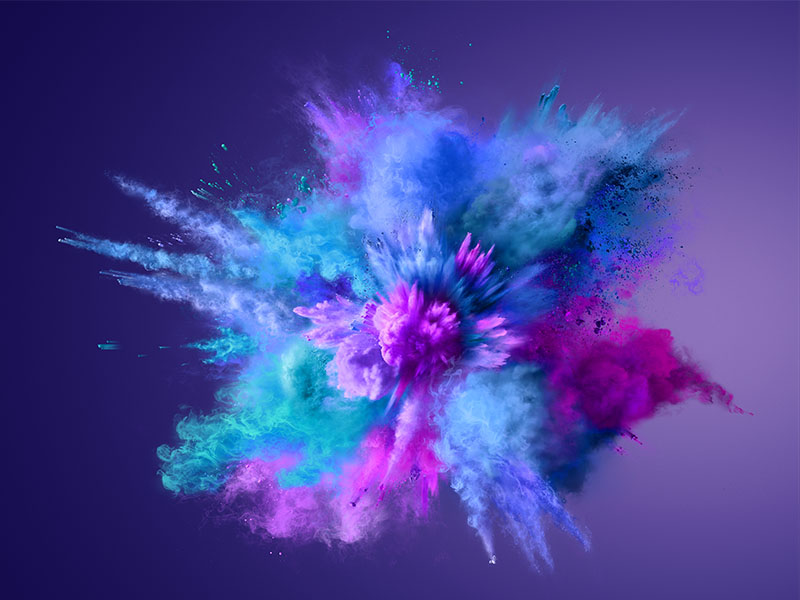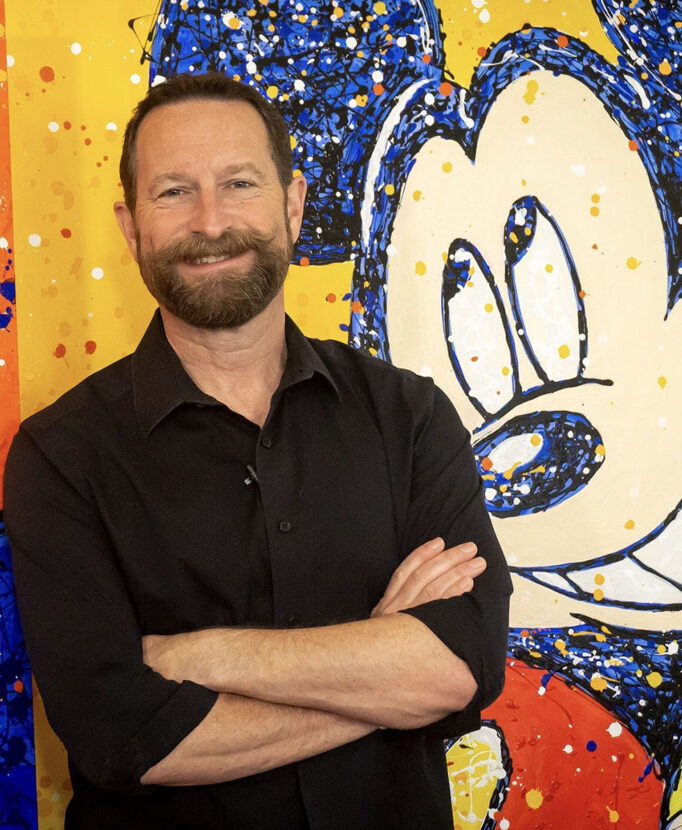Celeb Shot
Why “Think Different”? Because from Now On, It’s Business as Unusual
Former Head of Innovation and Creativity at The Walt Disney Company, Duncan Wardle, shares insights to help companies embed a culture of innovation and creativity across their entire organization.

In a post-pandemic world, nobody is going back to business as usual. We’re all going back to business as unusual.
People often ask me why I left Disney.
It’s a fair question. To them, it seems like the perfect place for someone’s creative imagination to run wild. And while I loved my career as the Head of Innovation and Creativity, after receiving the coveted Jiminy Cricket Bronze Statue celebrating 30 years of service, I knew it was time to leave.
Why? Because there was something bothering me. As I traveled the world searching for innovations to implement at Disney Parks, I got to meet a lot of different people and talk about a lot of big ideas. And anytime I spoke with someone outside of Disney, I realized just how rare the Disney way of thinking was.
While most companies have no issue asking their employees to be brave, innovative, and to “think different,” no one is providing these employees with the actual training they need to do so.
We train doctors. We train lawyers. We even train salespeople. But almost no company on earth trains employees on unlocking their creativity and innovative potential.
We live in an era of incredible disruption. If the pandemic exposed anything, it’s that there’s no more “business as usual.” Moving forward, it’s all business as unusual. And the companies that are going to survive are those that are most willing to embrace a culture of creativity and innovation.
I knew I had just the right tools (and toolkit) to help. So, Jiminy and I waved goodbye to Disney, and set off on our new adventure.
Why a Toolkit?
We all like to think of creativity as some enveloping force that wraps the artist in their workshop. And sure, while many artists may have an easier time unlocking their creative traits, the truth is creativity—like any skill—can be honed by anyone. You just need the right tools.
This is why I built The Innovation Toolkit – a toolkit made up of creative behaviors and tangible tools that empower any employee in any industry to drive innovation and explore their hidden creativity.
Why a toolkit? It’d be easy to go out and lecture companies on what I learned about creativity during my time at Disney. But what happens when I’m gone? Perhaps they remember an anecdote or two for a few days. But after that, it’s back to business as usual.
With The Innovation Toolkit, employees are given something tangible that they can use forever. And when people choose to use something when you’re not around, you know you’re changing culture. And changing culture is exactly what companies need to do if they want to think different.
What sorts of creative tools and behaviors can be found inside the kit? Let’s look at a few examples:
Creative Behaviors: Unlocking Creativity Through Play
I’m going to ask you a question. But before you respond, I want you to close your eyes and think deeply and honestly about your answer:
Where are you when you get your best ideas?
For most, the answer is something like the shower, the treadmill, the car, on a walk, playing in the yard with the dog, etc. But I can say with certainty that almost none of you answered “at work.”
Why don’t we get our best ideas at the very place we’re paid to get our best ideas? Because at work, we don’t have time to think. And when we don’t have time to think, our brain stays closed to 87% of its potential. Believe it or not only 13% of your brain is conscious, yet we use that part for most of the day, completely ignoring the other 87% of our brain’s capacity. Just think of all those ideas back there in your subconscious brain waiting to be unleashed.
But you can’t access your subconscious brain when you’re at work. Because when you’re at work, you are stressed, short for time, and feverishly using your conscious brain to try and tackle problems. That’s why as soon as you walk away from work to ride a bicycle or go for a jog, that big idea just pops right into your head.
So, what can you do to get your teams into that same mindset that allows for their best ideas while they’re at work?
Play!
The benefits of play are profound, and yet continue to be underappreciated inside corporate cultures. Encouraging your teams to play—whether it’s through games, exercises, or workshops —will ensure they release their inner child and start to think creatively.
And my favorite way to encourage play is by running an Energizer.
Energizers come in all shapes and sizes. Storyteller is one example. Participants pretend they’re the fictitious expert of some unique field (think a leading designer of parachutes for elephants) and are interviewed by other subjects in the room on their “expertise.” Another example is Heroes and Villains, where a group is split into two teams, and each is asked to give a pitch for (heroes) or against (villains) a particular idea, such as hosting a Pet Olympics.
Of course, listening to an “expert” on elephant parachutes or adults debating a Pet Olympics invariably leads to laughter. And when you hear laughter, you know you’ve unlocked the subconscious brain, and can now access a whole new world of creative ideas.
Creative Tools: Asking “What If?”
For most organizations—especially legacy brands—there is a tendency to get trapped by success. Once you reach a certain level of success, you become acutely focused on maintaining that success. The quarterly results and team goals and division metrics. All your work becomes focused on hitting these numbers. So, you begin to iterate instead of innovate, figuring that an updated version of whatever got you here will be enough to keep the success rolling.
For much of time, this iteration strategy has worked. But not anymore. It’s business as unusual now. Disrupt or die.
So, how can you help your organization disrupt? How can you encourage it to slay its scared cows in a way that is not only accepted, but becomes the norm?
The “What If” Tool.
The “What If” Tool is a method of encouraging disruption. This powerful tool has been used by countless visionaries to create novel new ideas, including Walt Disney, who used it to shape the original idea for Disneyland.
In 1940, Walt Disney released his masterpiece, Fantasia. To enhance the experience of the movie for audiences, Disney wanted to change the actual movie theater environment. He wanted it to mist inside the theater during the April Showers scene. And he wanted audiences to feel the heat pumped into the theater during Night on a Bare Mountain.
But there was a problem. Disney didn’t own any movie theaters, and he couldn’t convince the theater owners to make that level of investment for one movie. However, instead of accepting the situation as it appeared, Walt decided to use the “What If” tool to create a solution.
To start, he listed the rules of showing his movies in the movie theater:
- It’s dark
- It’s dirty
- Guests must go at a set time
- Guests must sit in a seat
- Guests must watch previews
- I—the movie creator—can’t control the environment
The last point was of particular significance to Disney, as it was the crux of his campaign for Fantasia. He decided that was the rule he was going to break…what if I could control the environment?
Now this was a very radical thought, because Disney did not own any theaters. To control the environment, he’d have to take his movies out of the theaters. And to do such a thing, he’d need to imagine a whole new way to immerse guests in his films.
Disney began to imagine What If I he took his movies out of theaters:
- They’d have to be 3D, since they were no longer on a movie screen
- They’d have to be interactive
- The characters would need a place to live
- And if characters had a place to live, they’d need to be separated, because Cinderella couldn’t live next to Davy Crockett and Jack Sparrow, as people wouldn’t be immersed in each story
- And if they had to separate characters into different places to live, they’d need to develop whole different lands based around certain characters and stories
And that’s exactly what Walt Disney did, opening the doors to Disneyland on July 17, 1955. The most disruptive innovation of the 20th century, all because Walt Disney dared to ask, “what if?” when he was told “no” by the theater owners of the day.
The Practice of Creativity
The “return to normal” we were promised for the last few years has been anything but. It’s safe to say that things will never truly be the same. From here on out, it’s business as unusual.
Success for every company now depends on whether they view this seismic shift as an opportunity or a threat. If you see opportunity, you’ve taken an important first step. But this step alone is not enough. You need to do more than just identify the opportunity—you must empower your teams with the tools and training they need to unlock their full creative potential, and truly think differently.
Those who do will secure a massive competitive advantage for many years to come.
Events aren’t easy, but working with WSB is. WSB works with thousands of respected influencers, thought leaders, and speakers each year and our experienced sales team is committed to the success of your event. For more creativity speaker ideas, please contact us.
